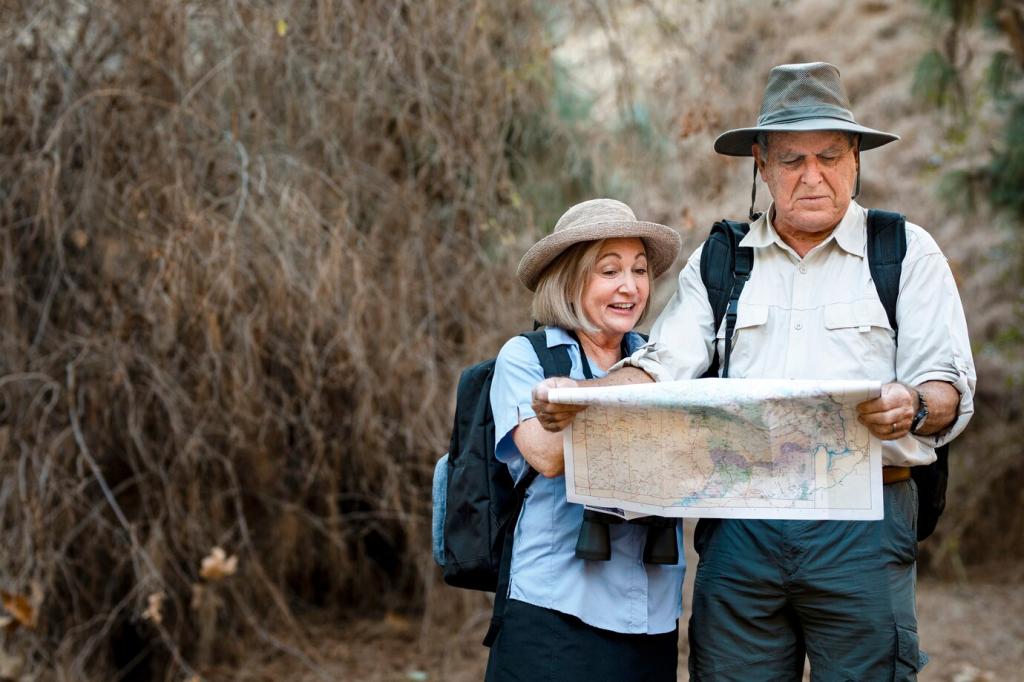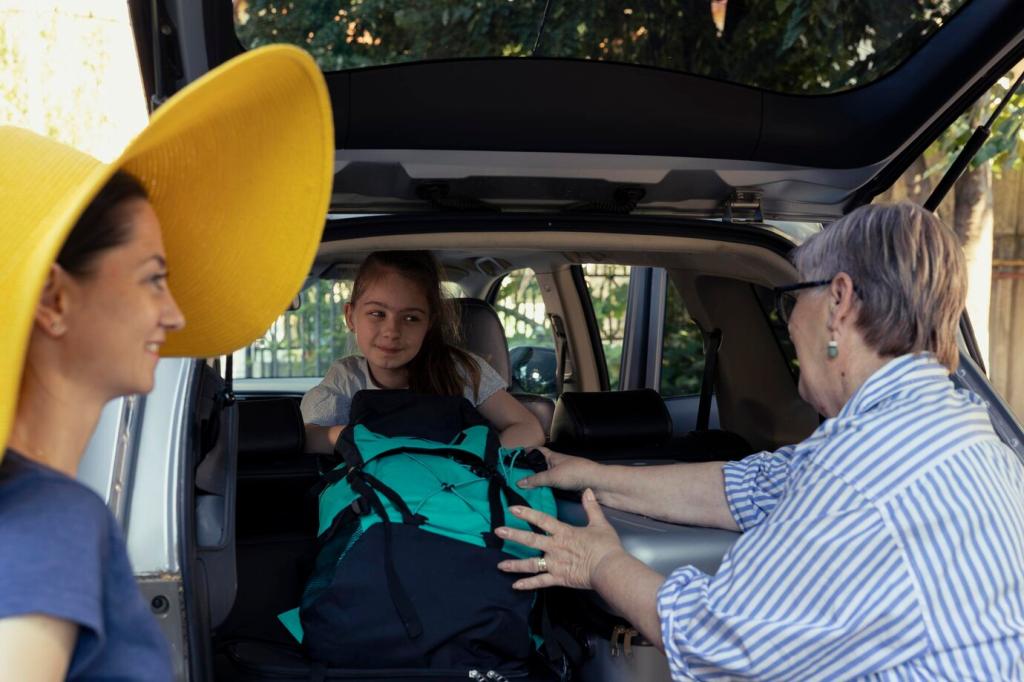How to Plan an Educational Trip with Grandkids
Set Shared Learning Goals Together
Co-create Big Questions
Gather around a map and ask what they most want to understand, like how volcanoes form or who built the first lighthouse. Write three questions together and make them your north star. Share your top question in the comments to inspire other families planning an educational trip with grandkids.
Define Age-Appropriate Outcomes
For younger kids, aim for simple outcomes such as identifying three bird species or sketching a fossil. Older grandkids can compare museum exhibits, interview docents, or write a short reflection. Invite them to suggest one measurable goal so they feel ownership and pride throughout the journey.
Invite Teacher Input
Email a teacher or coach for tips matching classroom topics, like civil rights history or ecosystems. Ask for vocabulary lists or a quick rubric to guide reflection. When teachers love your plan, kids return with stories that connect school with the world, reinforcing everything you experience together.
Choose a Destination That Sparks Wonder
Museums, Labs, and Living History
Science centers, planetariums, children’s museums, and living history villages create immersive learning. Look for touch-friendly exhibits, guided labs, and daily demonstrations. One grandfather told us his granddaughter finally grasped the concept of inertia while twirling on a frictionless platform, laughing as physics suddenly felt like play.
Nature as an Outdoor Classroom
National parks, tide pools, and botanical gardens provide sensory-rich lessons. On a coast trip, Nana Bev and Mateo timed waves and mapped tide pool zones. They counted starfish, compared seaweed textures, and left louder than the gulls, buzzing about food webs. Your backyard trail can be just as magical.
Local Gems Before Far-Flung Adventures
Test your plan with a short day trip to a nearby archive, farm, or historic mill. These low-cost trials help you refine pacing, snack strategy, and favorite learning styles. Share your local gem in the comments to help other grandparents start small and succeed quickly with their own plans.
Design an Intergenerational Itinerary
Plan one big learning anchor in the morning when energy is highest, then lighter activities after lunch. Use the 90 minute rule for complex exhibits. Schedule snack and rest windows like appointments. If attention fades, switch to movement based learning, like a scavenger hunt down a museum corridor.
Design an Intergenerational Itinerary
Choose a daily anchor, such as a guided tour with a scientist, then leave flexible blocks for curiosity detours. Kids may linger at a dinosaur dig table or a printing press demo. Build thirty minute buffers after each anchor so discoveries feel welcomed, not rushed, and curiosity leads the way.
Design an Intergenerational Itinerary
Prepare an indoor backup for rain days, like a library makerspace or archive reading room. Pack a couple of printable activities that travel well, such as mapping exercises or vocabulary bingo. Invite your grandkids to choose the backup in the morning, turning disappointments into decision making practice and resilience.


Budget, Logistics, and Permissions
Set a clear budget with three buckets: travel, learning experiences, and treats. Let kids allocate pretend dollars, debating choices like an extra exhibit versus a souvenir. This playful exercise teaches trade offs and value. Post your family’s favorite budget hacks in the comments to help other readers.
Budget, Logistics, and Permissions
Pick accommodations near the learning hub, or unique stays like farm cabins or historic inns that add context. Ask about quiet hours for reading or journaling. A family we know stayed above a bookstore, where evening author talks became an unexpected highlight and sparked gentle debates before bedtime.
Prepare Meds and Must Haves
Pack medications, allergy info, and a small comfort kit with bandages, hand wipes, sunscreen, and a favorite snack. Keep copies of prescriptions and pediatrician contacts. Review any sensory needs, like noise reducing headphones for echoing galleries, so environments feel friendly rather than overwhelming.
Navigation and Check Ins
Teach kids to identify staff badges and information desks. Use matching wristbands with your phone number. Practice a two minute pause and look routine if someone drifts away. Schedule emotional check ins too, asking how is your brain and body feeling, which invites honesty early instead of meltdowns later.
Food, Hydration, and Rest Rhythms
Plan snack breaks around learning anchors, and sneak in reading time with a picnic book. Encourage kids to choose a water leader who reminds everyone to sip. Short quiet pauses reset attention, making the next exhibit feel fresh. Share your best snack rotation ideas to help fellow grandparents prepare.
Reflect, Share, and Keep Curiosity Alive
Host a casual show and tell with journals, photos, and a favorite object. Ask each child to tell one wow moment and one quiet moment. Record their voices and send clips to parents or teachers. Invite readers to comment with their favorite reflection prompts to build our community collection.

